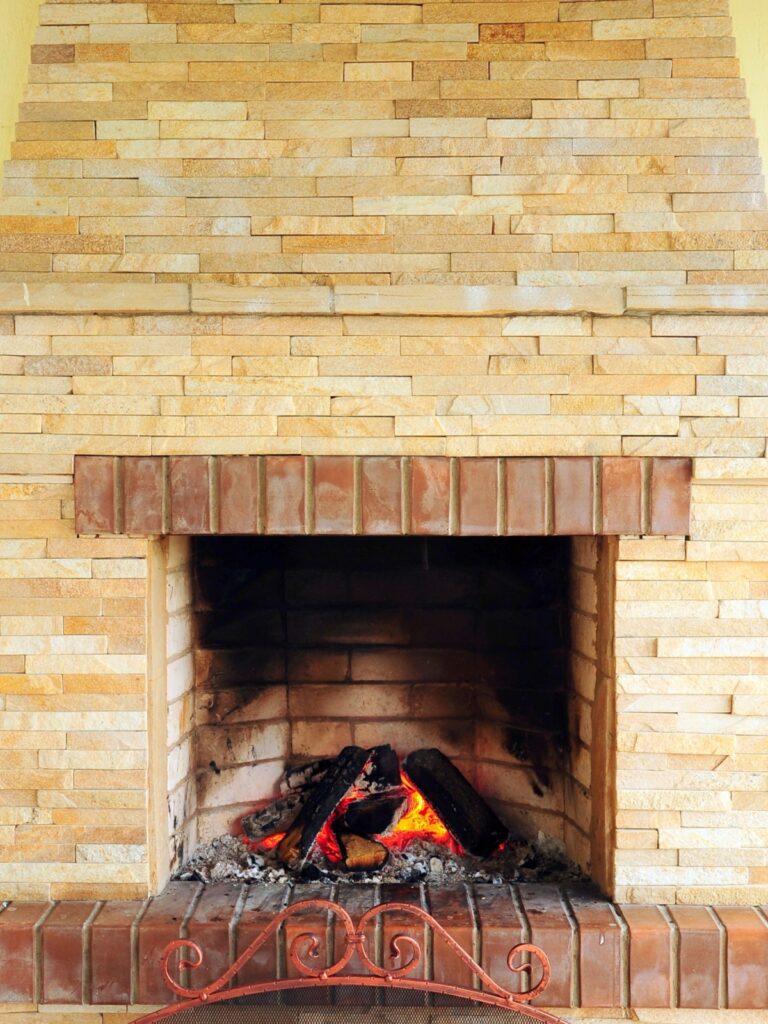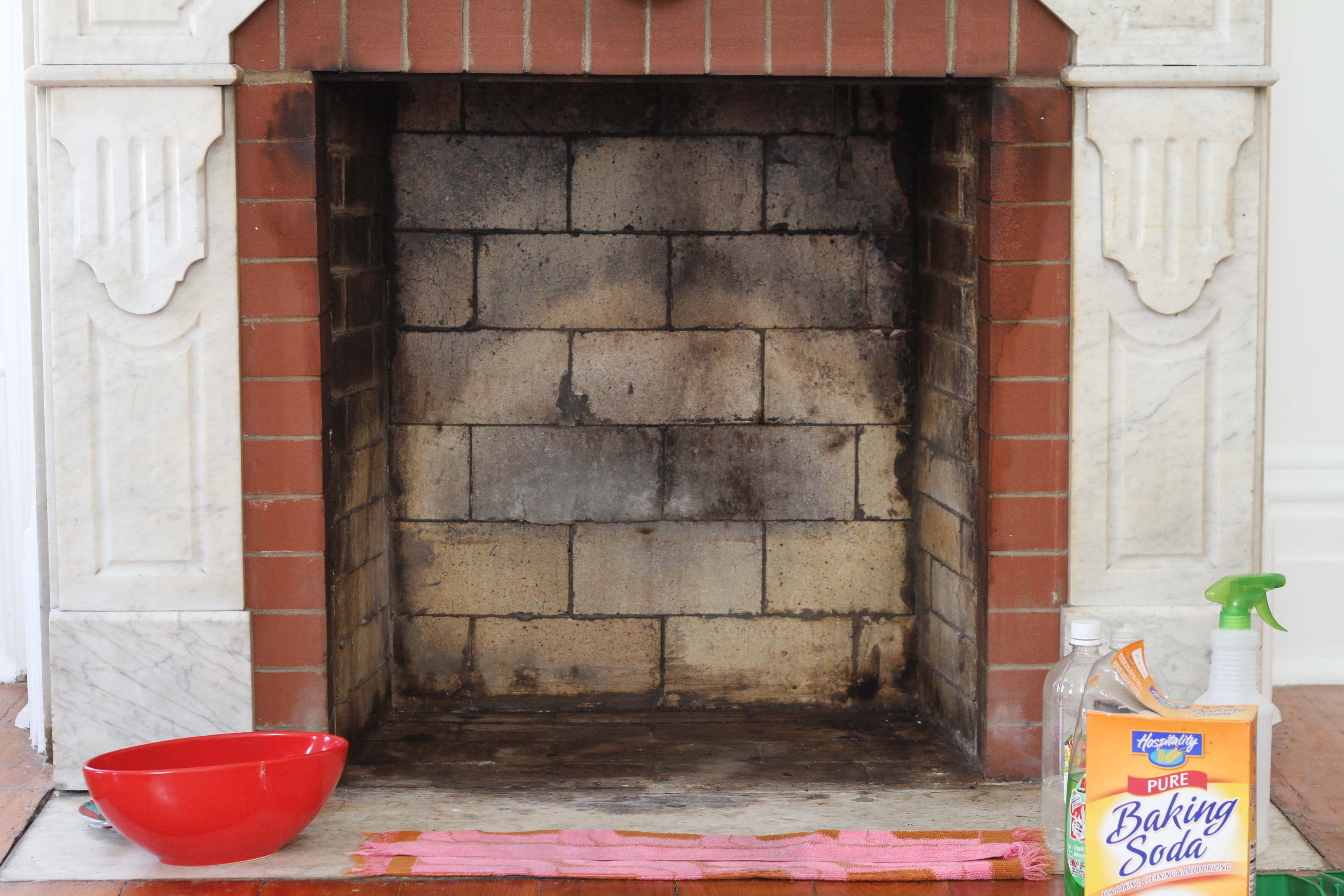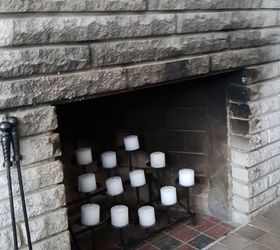Cleaning soot off fireplace bricks requires a careful approach to ensure the preservation of both the bricks and the surrounding area. The first step is to prepare the workspace by laying down protective covering to prevent soot and debris from spreading. Next, it’s important to wear appropriate protective gear such as gloves, safety goggles, and a mask to shield yourself from potential health hazards associated with soot inhalation. Before beginning the cleaning process, make sure the fireplace is completely cool to avoid any risk of burns or damage to the bricks.
Images about Best Way To Clean Soot Off Fireplace Bricks
Best Way To Clean Soot Off Fireplace Bricks

One effective method for cleaning soot off fireplace bricks is using a combination of water and trisodium phosphate (TSP) or a similar cleaning agent. TSP is a powerful degreaser and cleaner that can effectively break down soot and grime without causing damage to the bricks. To create a cleaning solution, mix TSP with water according to the manufacturer’s instructions. Using a scrub brush or sponge, apply the solution to the soot-covered bricks, working in small sections at a time. Allow the solution to sit for a few minutes to penetrate the soot, then scrub the bricks thoroughly to loosen the residue. Once the bricks are clean, rinse them with clean water to remove any remaining cleaner and soot residue.
Another popular method for cleaning soot off fireplace bricks is using a mixture of vinegar and water. Vinegar is mildly acidic, making it effective for breaking down soot and stains without causing damage to the bricks. To create a cleaning solution, mix equal parts vinegar and water in a spray bottle or bucket. Spray or apply the solution to the soot-covered bricks, allowing it to sit for a few minutes to penetrate the residue. Then, use a scrub brush or sponge to scrub the bricks gently, working in circular motions to lift away the soot. Once the bricks are clean, rinse them thoroughly with water to remove any remaining vinegar residue.
For particularly stubborn soot stains, a paste made from baking soda and water can be applied directly to the affected areas. Baking soda is abrasive enough to help lift away tough stains without scratching or damaging the bricks. To make the paste, mix baking soda with water until it forms a thick, spreadable consistency. Apply the paste to the soot-stained bricks, then use a scrub brush or sponge to work it into the surface. Allow the paste to sit for a few minutes to loosen the soot, then scrub the bricks thoroughly. Once the soot is removed, rinse the bricks with clean water to remove any leftover residue. This method may need to be repeated several times for deeply ingrained stains.
How to Clean Fireplace Bricks: 9 Steps (with Pictures) – wikiHow Life
How to Clean Fireplace Bricks – Simple Practical Beautiful
Best way to clean Creosotes off brick fireplace hack
4 Ways to Clean Soot from Brick – wikiHow
How To Clean a Brick Fireplace with Natural Cleaners Apartment
How to Clean Fireplace Bricks
How to Clean a Fireplace Firebox (Friday Five) – Dogs Donu0027t Eat Pizza
How fo I remove fireplace soot/smoke? Hometalk
BEST Ways To Clean Fireplace Brick
How To Clean Brick Fireplace – Kitchen Infinity
Related Posts:
- Small Brick Fireplace
- Remodel Brick Fireplace With Stone
- Red Brick Outdoor Fireplace
- How To Clean Mold Off Brick Fireplace
- Painted Gray Brick Fireplace
- Paint Wash Brick Fireplace
- Victorian Brick Fireplace
- Old Brick Fireplace Remodel
- Update Old Brick Fireplace
- Old Brick Fireplace Makeover Ideas
Best Way To Clean Soot Off Fireplace Bricks
A cozy fireplace adds warmth and charm to any home, providing a comforting atmosphere during colder months. However, over time, soot and residue can build up on the bricks surrounding the fireplace, tarnishing its appearance. Cleaning soot off fireplace bricks may seem like a daunting task, but with the right techniques and tools, it can be done effectively and efficiently. In this article, we will explore the best way to clean soot off fireplace bricks, providing step-by-step instructions, offering pro tips, and answering some frequently asked questions along the way.
Preparing for the cleaning process:
Before diving into the actual cleaning process, it’s important to take some preparatory steps to ensure a successful outcome.
Gather the necessary supplies:
To clean soot off fireplace bricks effectively, you will need several supplies including:
– Bristle brush or scrub brush
– Vacuum cleaner with brush attachment
– Rubber gloves
– Plastic sheeting or drop cloth
– Stiff scraper or putty knife
– Bucket
– Warm water
– Mild dish soap or fireplace cleaning solution
– Scrub sponge or nylon bristle brush
Protect the surrounding area:
Cleaning soot off fireplace bricks can be a messy task. To prevent any damage or staining to your flooring or furniture, it’s essential to protect the surrounding area. Lay down plastic sheeting or a drop cloth around the fireplace to catch any debris or residue that may fall during the cleaning process.
Removing loose soot and debris:
Start by vacuuming:
Using a vacuum cleaner with a brush attachment, gently remove any loose soot and debris from the fireplace bricks. This will help minimize spreading the soot around while preparing the surface for deeper cleaning.
Brush away loose particles:
Next, use a bristle brush or scrub brush to loosen and remove any remaining loose particles. Gently scrub the bricks in a circular motion, paying attention to the areas with the most soot buildup. This step will make the subsequent cleaning process more effective.
Cleaning the fireplace bricks:
Mix a cleaning solution:
In a bucket, combine warm water with mild dish soap or a specialized fireplace cleaning solution. Follow the manufacturer’s instructions if using a commercial product. Mix the solution until it forms a soapy mixture.
Test the solution on a small area:
Before applying the cleaning solution to the entire surface of the bricks, it’s advisable to test it on a small, inconspicuous area first. This will help ensure that the solution doesn’t cause any discoloration or damage to the bricks.
Apply the cleaning solution:
Using a scrub sponge or nylon bristle brush, dip it into the cleaning solution and start applying it to the fireplace bricks. Begin from the top and work your way down, applying even pressure to remove stubborn soot stains.
Scrub thoroughly:
Once you have applied the cleaning solution, scrub each brick thoroughly to lift off any remaining soot or residue. Pay extra attention to heavily stained areas, working in circular motions and applying more pressure when needed. Continue this process until all bricks are cleaned to your satisfaction.
Rinse with clean water:
After scrubbing, rinse off the cleaning solution using clean water and a sponge or cloth. Make sure to remove all traces of soap residue from the bricks.
Drying and finishing:
After the wood has been cut and shaped, it needs to be dried before it can be finished. This is an important step, as moisture content affects the stability and durability of the wood.
There are different methods of drying wood, including air-drying and kiln drying. Air-drying involves stacking the lumber and allowing air circulation to slowly remove the moisture content. This method can take several months or even years, depending on the species and thickness of the wood.
Kiln drying, on the other hand, speeds up the drying process by using heat and humidity-controlled chambers. This method can significantly reduce drying time but may also cause some shrinkage or warping if not done properly.
Once the wood is dry, it is ready to be finished. Finishing serves two purposes – enhancing the appearance of the wood and protecting it from damage. There are many different types of finishes available, including stains, varnishes, paints, and oils.
Stains are used to change the color of the wood while still allowing the natural grain to show through. Varnishes provide a protective layer that enhances the beauty of the wood and provides durability. Paints can completely cover the wood and offer a wide range of colors and finishes. Oils penetrate into the wood to nourish and protect it from within.
The chosen finish is usually applied with a brush or spray gun in multiple coats. Each coat needs to be sanded and smoothed before applying the next one. This process helps to achieve a smooth and even finish.
After finishing, it is important to allow sufficient drying time for the coats to cure properly. This typically takes a few days to a few weeks, depending on the type of finish used.
Drying and finishing are essential steps in woodworking. Properly dried wood ensures stability and durability, while finishing enhances its beauty and offers protection against damage. By following these steps carefully, craftsmen can create high-quality wooden products that will stand the test of time.
If the stubborn stains persist, you can try using a solution of equal parts vinegar and water. Apply the solution to the stained areas and let it sit for a few minutes before scrubbing with a brush or sponge.
This vinegar and water solution is effective for removing stubborn stains. Vinegar is a natural cleaning agent that can break down tough stains, while the water helps to dilute the vinegar and make it safe to use. Applying the solution to the stained areas and allowing it to sit for a few minutes allows the vinegar to penetrate the stain and lift it from the surface. Afterward, scrubbing with a brush or sponge helps to further loosen and remove the stain. Remember to rinse the area thoroughly afterward to remove any residue.












